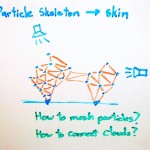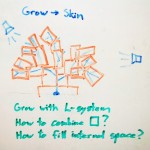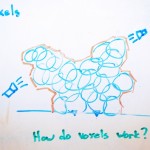Billy Keyes – Project 3 Proposal
Initial Ideas
Inspired by some of the projects in my last Looking Outwards, I wanted to do something that would produce nice-looking images with an emphasis on color. Both ideas I had for achieving this involved things that traced out colored paths in the image. The first involved little creatures that behaved using some combination of Craig Reynolds steering behaviors and color-based reproduction and grouping rules. As the things moved around, they would leave color trails. The second idea involved growing colored paths for dots wandering around the space, as if steps were appearing out of nothing. As the dots moved farther away from a path segment, the segment would fade out.
In talking about these ideas with other people in the class, I decided that it would be very difficult to get the rules tuned to produce results that looked better than scribbling on paper with crayons. Both of the projects I was inspired by had a well-defined structure, which I was lacking here.
Around the same time, a completely different ideas I had discarded early on started to seem possible and interesting.
Growing Light-Responsive Buildings
I know nothing about architecture, but I’ve always enjoyed structures that make excellent use of natural light. So I thought it would be interesting to try growing buildings, like plants, in response to light sources. At minimum, I hope to create some interesting shapes that are inspired by nature without being natural. At best, I’d really like to create actual buildings (even if they could never be built), with windows, and show how light exists in the generated spaces. At best-est, I’d like to 3D print some of the resulting structures, but I don’t think there will be time for this.
The project will likely be built in Processing, using Toxiclibs to handle the meshes and computational geometry, although I’m also considering scripting Blender. It mostly depends on whether my approach involved generating all geometry or automating traditional modelling tools (extrusion and subdivision). Regardless of where the models are produced, I will likely use Blender to create final renderings.
Currently, I’m trying to determine the best way to approach growing the models. I hope to have at least one method working by Thursday, and hopefully have a second started so I can compare them. Included below are some (mostly unhelpful) sketches of the methods I’ve thought of so far.




